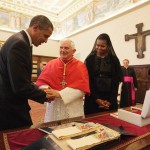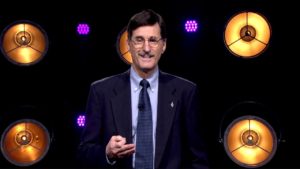
The College of Cardinals elects a new pope in conclave, which is the process of sequestering the voting members of the college in Vatican City so that they have no contact with the outside world. The word “conclave” comes from the Latin phrase cum clavis, meaning “with key.” The term is suitable since the cardinals are locked inside the Sistine Chapel in the Apostolic Palace during the voting process.
A conclave begins no earlier than 15 days and no later than 20 days after the pope’s death. Cardinals participating in conclave stay in St. Martha’s House, a hospice inside the Vatican that has 130 rooms. Arrangements are made to ensure that the cardinals are not approached as they are transported between St. Martha’s and the Sistine Chapel.
In 1996, Pope John Paul II described the complex procedures that would be used to elect the next successor to St. Peter, in an Apostolic Constitution called Universi Dominici Gregis (UDG). It is an accepted practice for popes to publish the norms that regulate the election of their successors, and popes often make small adjustments to the procedures. According to John Paul II, these changes are made “with the intention of responding to the needs of the particular historical moment.”
The UDG laid out these rules for electing a new pope:
The maximum number of electors from the College of Cardinals is 120. The college is currently composed of 194 cardinals.
Any cardinal who turns 80 before the day the Papacy is vacated, either by death or resignation, cannot take part in the election. Currently, 135 cardinals are eligible to vote under this rule (15 of those 135 would be disqualified from the vote because the limit is 120).
A two-thirds-plus-one majority is required to elect a pope.
Two ballots each are held in the morning and afternoon, for a total of four per day.
If a new pope is not selected after 12 to 13 days, the cardinals may choose to impose a majority vote, which would allow selection of a new pope by a simple majority.
Each rectangular ballot is inscribed at the top with the words Eligo in Summum Pontificem, meaning “I elect as supreme pontiff.” Below these words, each cardinal writes down the name of the person he chooses as the pope. The vote is done in secret with paper and pen. The voting cardinal then folds the ballot twice, holds it in the air, and carries it the chapel’s altar. He then says, “I call as my witness Christ the Lord who will be my judge, that my vote is given to the one who before God I think should be elected.” The cardinal places the ballot on a plate that sits atop the ballot receptacle and uses the plate to drop the ballot into the receptacle. After bowing before the altar, he returns to his seat.
Three Scrutineers, who are selected by all of the cardinals, are charged with counting the ballots. Once the ballots are collected, the Scrutineers count the ballots to determine if everyone has voted. If the number of ballots doesn’t match the number of electors, the ballots are immediately burned and another vote is taken.
Here are the steps for the vote-tallying procedure:
The first Scrutineer takes a ballot, notes the name on it, and passes it to the next Scrutineer.
The second Scrutineer notes the name and passes it to the third Scrutineer.
The third Scrutineer reads aloud the name on the ballot, pierces the ballot with a needle through the word Eligo at the top of the ballot, and slides the ballot onto a string of thread.
Each elector notes the name that is read.
Once all ballots are read, the Scrutineers write down the official count on a separate sheet of paper.
The third Scrutineer ties the ends of the thread on which the ballots are placed in a knot to preserve the vote.
The ballots are placed in a receptacle.
After each vote, the ballots and any notes regarding them are burned. Smoke from the burning of the ballots appears over the Vatican Palace. If no pope has been chosen, a chemical is applied to the ballots in order to create black smoke when burned. White smoke signals that a pope has been elected.
The newly elected pope remains pope for the term of his life, or until he retires. His reign is referred to as a pontificate. In the next section, you will learn what the pope does during his pontificate.




Comments